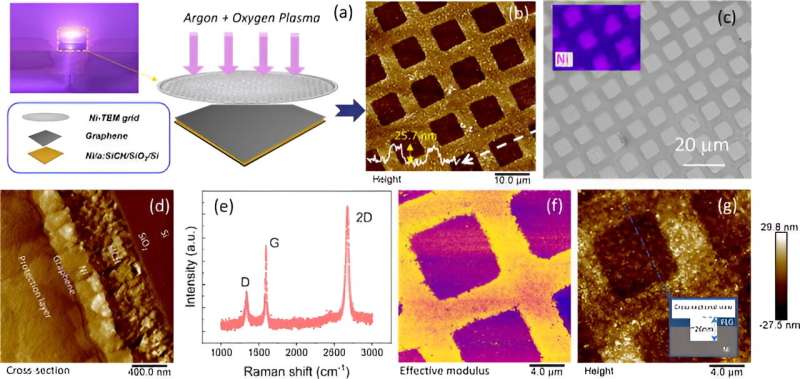
Researchers have developed a new technique to solve the problem of how to increase the capacity of sodium-ion batteries.
The research in Applied Physics Reviews was jointly led by Professor Oleg Kolosov from Lancaster University and Professor Zhigao Huang from Fujian Normal University, with key results obtained by Associate Professor Yue Chen from both Lancaster and Fuzhou.
Professor Kolosov said, “Nanoscale studies of rechargeable storage are essential for the development of new, efficient and safe batteries.
“This study will enable a cheaper and safer energy storage alternative to lithium-ion batteries, with lithium being much scarcer and more difficult to mine compared with sodium batteries. This fundamental research is expected to ultimately enhance the cycle stability, lifespan, and capacity of batteries.”
The researchers developed a unique technique of electrochemical ultrasonic force microscopy (EC-UFM) for the nanoscale imaging of interfaces in rechargeable batteries directly during their operation, or operando, something that was not possible using existing electrochemical characterization methods. EC-UFM allowed the researchers to observe the formation and properties of one of the crucial elements in these batteries—solid-state-interphase (SEI)—that affects their capacity, power and longevity.
The new technique developed as part of NEXGENNA Faraday Institution project solves a long-standing problem of how to increase the capacity of sodium-ion batteries, using solvent as a vehicle for the co-intercalation of sodium into the carbon electrode.
By guiding the passivating SEI layer formation during the battery charge/discharge process, the scientists discovered how to preserve the shuttling of charge carriers between the electrolyte and electrode, resulting in efficient and powerful sodium-ion batteries.
More information:
Yue Chen et al, Operando nano-mapping of sodium-diglyme co-intercalation and SEI formation in sodium ion batteries’ graphene anodes, Applied Physics Reviews (2024). DOI: 10.1063/5.0196568
Lancaster University
Researchers develop technique to boost sodium-ion battery capacity (2024, June 19)
retrieved 19 June 2024
from https://techxplore.com/news/2024-06-technique-boost-sodium-ion-battery.html
part may be reproduced without the written permission. The content is provided for information purposes only.

Researchers have developed a new technique to solve the problem of how to increase the capacity of sodium-ion batteries.
The research in Applied Physics Reviews was jointly led by Professor Oleg Kolosov from Lancaster University and Professor Zhigao Huang from Fujian Normal University, with key results obtained by Associate Professor Yue Chen from both Lancaster and Fuzhou.
Professor Kolosov said, “Nanoscale studies of rechargeable storage are essential for the development of new, efficient and safe batteries.
“This study will enable a cheaper and safer energy storage alternative to lithium-ion batteries, with lithium being much scarcer and more difficult to mine compared with sodium batteries. This fundamental research is expected to ultimately enhance the cycle stability, lifespan, and capacity of batteries.”
The researchers developed a unique technique of electrochemical ultrasonic force microscopy (EC-UFM) for the nanoscale imaging of interfaces in rechargeable batteries directly during their operation, or operando, something that was not possible using existing electrochemical characterization methods. EC-UFM allowed the researchers to observe the formation and properties of one of the crucial elements in these batteries—solid-state-interphase (SEI)—that affects their capacity, power and longevity.
The new technique developed as part of NEXGENNA Faraday Institution project solves a long-standing problem of how to increase the capacity of sodium-ion batteries, using solvent as a vehicle for the co-intercalation of sodium into the carbon electrode.
By guiding the passivating SEI layer formation during the battery charge/discharge process, the scientists discovered how to preserve the shuttling of charge carriers between the electrolyte and electrode, resulting in efficient and powerful sodium-ion batteries.
More information:
Yue Chen et al, Operando nano-mapping of sodium-diglyme co-intercalation and SEI formation in sodium ion batteries’ graphene anodes, Applied Physics Reviews (2024). DOI: 10.1063/5.0196568
Lancaster University
Researchers develop technique to boost sodium-ion battery capacity (2024, June 19)
retrieved 19 June 2024
from https://techxplore.com/news/2024-06-technique-boost-sodium-ion-battery.html
part may be reproduced without the written permission. The content is provided for information purposes only.









